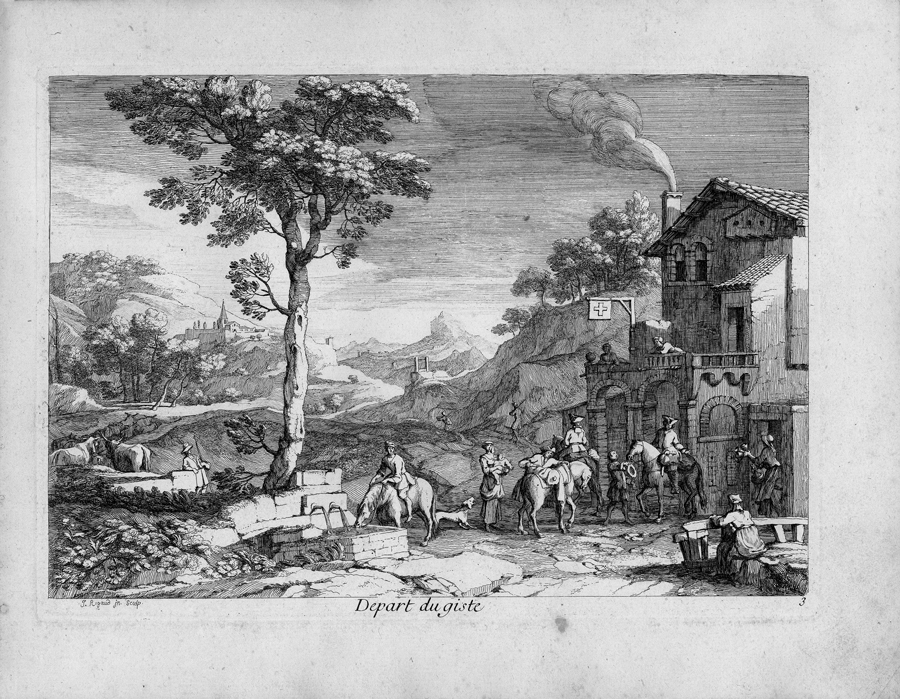Loading the page ...
Jacques Rigaud
(ca. 1681 Marseille – ca. 1753 Paris)
Livre de Paysages et Marines, Ou sont Representez les Avantures des Voyageurs. Title sheet, suite of 12 etchings. Together with Provence. Suite of 6 etchings. 24.5 x 32 cm (sheet size). In a contemporary binding with marbled paper cover. Nagler 51, 52; Le Blanc 138, 139.
In earlier sources the veduta draughtsman and etcher, Jacques Rigaud, and his nephew and collaborator, Jean Baptiste Rigaud, are frequently confused with each other. Since both authors have a very similar style and also collaborated as engravers, the personal style of each can only be distinguished with difficulty. These two sets, however, may be attributed with considerable certainty to the elder Rigaud. In a light, vibrant and deft etching technique the individual episodes of the Livre de Paysages et Marines depict the hazards respectable travellers were exposed to while touring in southern climes. The narrative point is made in general terms. Thus the protagonists of the story are not individually characterized and their number varies from scene to scene. What we see are a series of tableaux vivants, which grippingly illustrate the perils faced by European travellers. After an initially peaceful ride on horseback through a blooming and park-like landscape the riders run into an ambush. In the following scene fashionably dressed gentlemen in cocked hats are boarding a three-master lying at anchor. There follows, as might be expected, an attack by Turkish pirates, ultimately leading to captivity and slavery in North Africa. Another print shows a daring bid to escape in a little sailing boat during a storm. A shipwreck is inevitable, as we discover in the penultimate scene. The final scene shows the happy homecoming of the adventurers to their native city, where they are effusively welcomed and embraced by their relatives and friends. Despite the somewhat stereotyped character of the subject Rigaud has rendered the events with narrative verve. His etching technique is refined and enchants in the finely composed landscapes by its subtle chiaroscuro and atmospheric effects.
The same observation goes for the other set of etchings contained in the album, numbering six in all: Provence depicts the folklore and customs of the region in detailed and well-populated scenes. The protagonists move with a lilting, dancing gait against lush landscape backgrounds. In the skilled and varied rendering of large groups of figures Rigaud proves himself a worthy successor to Callot. The elegance and fluidity of the drawing make the set a characteristic and charming document of 18th century French printmaking.
Excellent, harmonious impressions with full margins. The title sheet with slight surface soiling and an unobtrusive crease in the lower left-hand corner; the other prints with slight signs of aging, otherwise in perfect condition.
